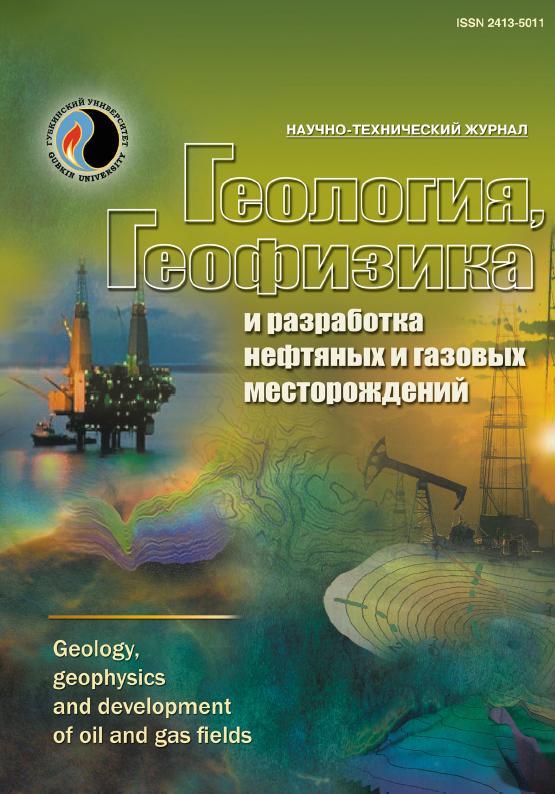CAPILLARY IMPREGNATION IN OIL RECOVERY PROCESSES
UDC: 622.276.1/.4+552.578:532.6
DOI: 10.33285/2413-5011-2021-11(359)-47-51
Authors:
SVALOV ALEXANDER MIKHAILOVICH1
1 Oil and Gas Research Institute Russian Academy of Sciences (OGRI RAS), Moscow, Russian Federation
Keywords: Buckley - Leverett equation, area of displacement, capillary forces, convection components
Annotation:
The correspondence between the functions of capillary pressure and water saturation of rock samples, experimentally determined on standard laboratory equipment, is analyzed. It is shown that the indicated functions, obtained on capillarimeters and centrifuges according to the currently operating methods, describe the process of displacing a wetting liquid (water) by a non-wetting one (oil, gas) in accordance with the peculiarities of the formation of oil deposits in traps in geological processes, but these dependences cannot be used for descriptions of the processes of oil displacement by water during the development of productive formations. The difference between the experimental dependences from the real ones in this case is caused by the formation of residual oil micro-volumes in the rock during the displacement of oil from the productive formations, but when laboratory studies of capillary pressure are carried out according to the currently accepted methods, there is no residual oil saturation in the rock samples. To solve this problem, it is proposed to saturate rock samples not only with a wetting liquid before carrying out laboratory experiments, but also to provide for the stage of forming an initial residual saturation with a non-wetting liquid in them. This will make it possible to more adequately simulate the processes of oil displacement in real reservoir conditions and more accurately estimate the residual oil reserves in stagnant areas at a later stage of the development of oil deposits. In the work, a quantitative criterion was also obtained that allows assessing the residual oil reserves in the low-permeability near-roof part of the productive formation.
Bibliography:
1. Гудок Н.С., Богданович Н.Н., Мартынов В.Г. Определение физических свойств нефтеводосодержащих пород. - М.: Недра-Бизнесцентр, 2007. - 592 с.
2. Тиаб Дж., Дональдсон Эрл Ч. Петрофизика: теория и практика изучения коллекторских свойств горных пород и движения пластовых флюидов. - М.: ООО "Премиум Инжиниринг", 2009. - 868 с.
3. Свалов А.М. Проблемы определения капиллярного давления в образцах горных пород методом центрифугирования (часть 1) // Нефт. хоз-во. - 2014. - № 8. - С. 40-43.
4. Свалов А.М. Проблемы определения капиллярного давления в образцах горных пород методом центрифугирования (часть 2) // Нефт. хоз-во. - 2015. - № 1. - С. 80-84.
5. Баренблатт Г.И., Ентов В.М., Рыжик В.М. Движение жидкостей и газов в природных пластах. - М.: Недра, 1984. - 211 с.

